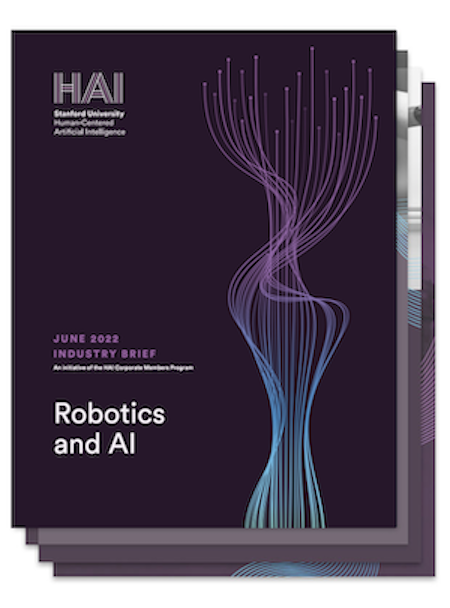Three Trends in Stanford Robotics Research

In the latest industry brief, learn about how scholars are advancing more adaptive, assistive robotics and pushing forward autonomous technology.
The COVID-19 pandemic has drastically changed how we operate within our daily lives and across industries. More companies moved toward automating processes and implementing robotics. While that move might inoculate some industries from the fragility of systems built solely on human labor, it would be a mistake to move to full automation, which would worsen workers’ economic power and create a wider power imbalance between those who control technology and those who don’t. The best approach lies somewhere in the middle, where we can combine human intelligence with robotic capabilities to create more durable and adaptable systems.
Researchers at Stanford are focused on applying innovative machine learning techniques in robotics to enable higher levels of human-interaction ability. A new Stanford HAI industry brief details some of the cutting-edge research with applications in our personal lives and across industries, including manufacturing, healthcare, and autonomous vehicles. Following are three trends in robotics research at Stanford.

More adaptive robots: New robotic learning techniques – some involving learning from human demonstration, adaptive learning, optimization, and more – are leading to more useful robotics. Robot capabilities have grown to become more adaptable to dynamically changing environments while solving highly complex problems, making robotics more suitable for a wider array of industrial applications, including manufacturing insertion and manipulation tasks.
Robotic helpers: Another research focus is human-robot interaction, including assistive robotics, medical robotics, and human augmentation. Scholars in these areas focus on the ability to interpret, adapt, and enhance human behavior. By creating robotics that are responsive to human input, they are amplifying human skills, such as with teleoperated surgery, and improving quality of life, such as assisting patients in dressing and bathing.
Better autonomous technologies: Mobility represents another large and fundamental problem space within robotics – it brings together the need for capabilities across human interaction, adaptation in dynamic environments, perception, and complex decision making. Autonomous vehicles have enormous potential within transportation and the future of supply chain logistics. New Stanford research is addressing essential problems within those applications, including multiple object detection, safe route planning during sensor failure, navigating around humans, and more – all of which require innovative usage of artificial intelligence.
Recent breakthroughs in machine learning have led to a huge growth in robotic intelligence and thus widened the applications of robotics within our personal and professional lives. Dig into this recent industry brief to learn more about research in these sectors and see the latest advances from Stanford faculty.
Stanford HAI's mission is to advance AI research, education, policy, and practice to improve the human condition. Learn more.
